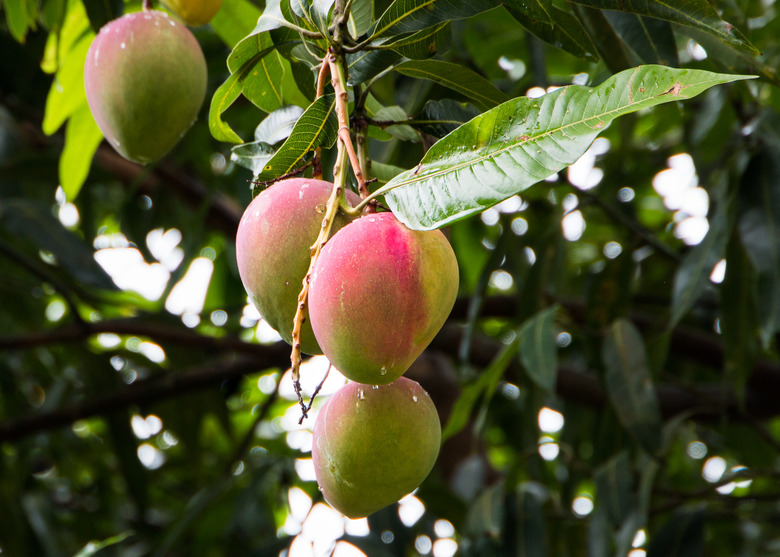When Should You Fertilize Mango Trees?
We may receive a commission on purchases made from links.
Mango trees are native to southeast Asia and Indochina but are cultivated in subtropical climates worldwide. In the United States, limited commercial production occurs in Florida, California, Puerto Rico and Hawaii. The fruit tree tolerates a variety of soils, but a fertilization regimen increases the amount of nutrients available to the tree. Soil test results are used to customize fertilizer mixes, which are applied at various stages throughout the plant's growth cycle. The result is an overall improvement to tree health and fruit yields.
Best Time to Fertilize Mango Trees
Best Time to Fertilize Mango Trees
Members of the California Rare Fruit Growers Association recommend fertilizing your mango tree on the same schedule you would fertilize a citrus plant. For mature trees, fertilizers are applied before the first spring growth appears and once more immediately after harvest. Spring growth emergence as well as harvest time is dependent upon your region's climate and your mango species. In some regions, mango trees begin budding in May. Within roughly 100 to 150 days after flowering, mango fruit is ready to harvest. Commercial harvests occur in June and July, but fruit can persist into early autumn. Applying fertilizer after mid-summer is not recommended, even if you harvest fruit into September.
Worst Time to Fertilize Mango Trees
Worst Time to Fertilize Mango Trees
Fertilizing during times of drought and high heat causes plant injury and even death. During stressful periods, mango trees attempt to conserve energy, but when fertilizer is available, the plants try to grow. They are essentially burning their candles at both ends, and the result is death. Young plants are also damaged by excessive fertilization. High levels of nitrogen "burn" tender roots. Planting a tree with fertilizer in the planting hole is not recommended. If fertilizer is added at all during planting, incorporate a 50/50 mixture or less into the soil before back-filling the planting hole.
Fertilizer Amount and Frequency
Fertilizer Amount and Frequency
Fertilize once a month for young trees, three to four times a year for large trees. Amounts vary depending on tree size. Young trees should receive at least 1/4 pound of fertilizer per month but should not receive more than 1 pound per month. Commercially available harsh fertilizers can be replaced with organic fertilizers, like fish emulsion, which are less likely to aggravate young trees. Take a soil sample to determine what your soil needs are so that optimum amounts of appropriate fertilizer are used.
Soil Tests and Fertilizer Mixes
Soil Tests and Fertilizer Mixes
Fertilizer mixes complement your garden's soil by providing nutrients your soil lacks and restoring nutrients lost due to the tree's uptake. University extension soil scientists read soil tests, for a fee, and provide fertilizer suggestions for your soil type and tree species. Fertilizer mixes are numerically labeled with formula ingredients and quantities. Numbers indicate the amount of a specific nutrient in relation to the amounts of other nutrients.
Typical mango tree fertilizer mixes list nitrogen, phosphoric acid, potash and magnesium. Some mixes used for mango trees are 6-6-6-2 or 8-3-9-2 (nitrogen, phosphoric acid, potash, magnesium). Your soil's pH levels also influence your tree's growth. Iron, zinc, boron and manganese are applied to soils that are too acidic or neutral to properly sustain a mango tree.
